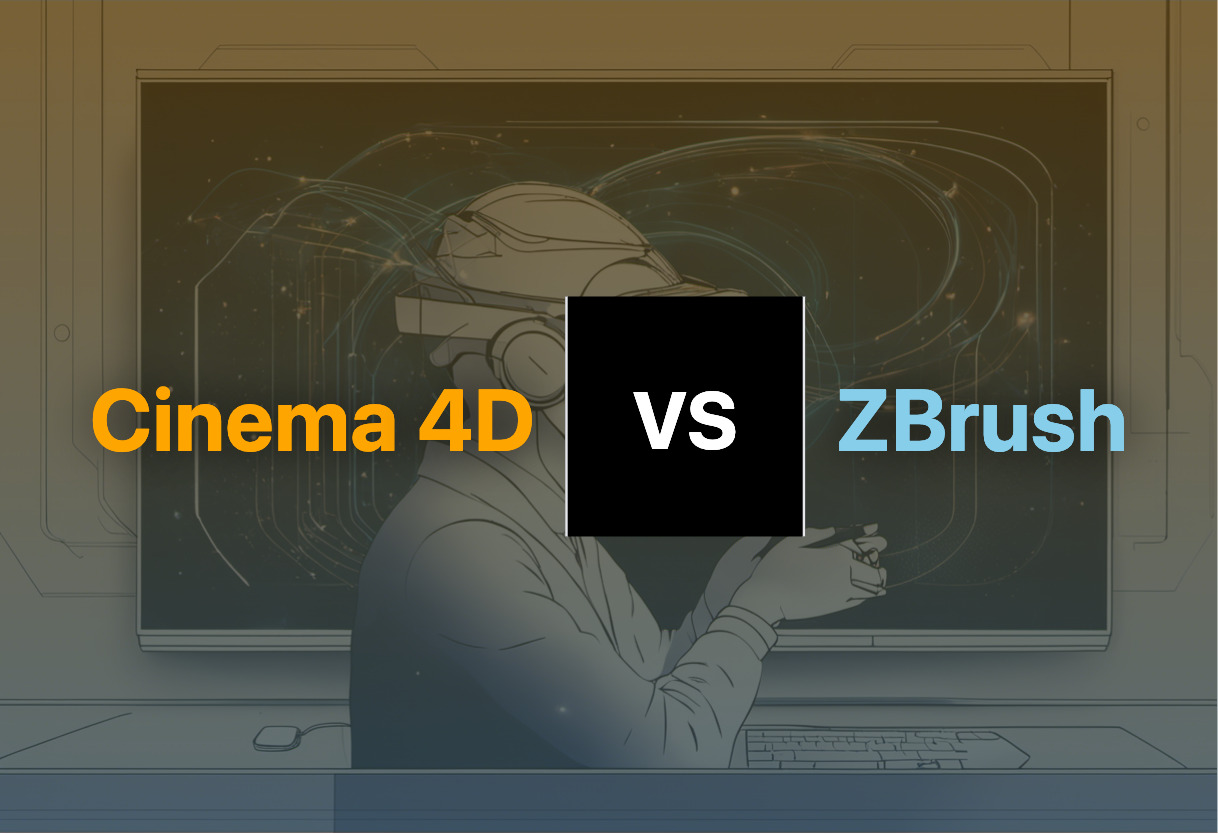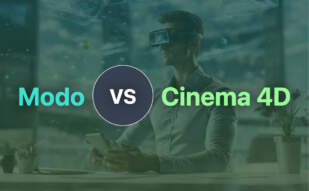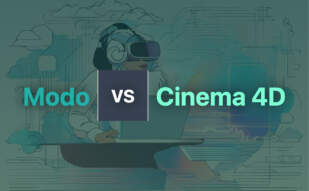When choosing between Cinema 4D and ZBrush, consider your project requirements. ZBrush stands out in creating detailed, realistic sculptures, ideal for game, film, and animation industries. On the other hand, Cinema 4D, with its advanced modeling and animation capabilities, is best suited for motion graphics and creating photorealistic materials.

Key Differences Between Cinema 4D and ZBrush
- Functionality: Cinema 4D excels in motion graphics and animation while ZBrush is top-tier for digital sculpting.
- Tools: ZBrush boasts popular tools such as Sculptris Pro, Dynamesh, while Cinema 4D features a comprehensive set of tools including polygonal modeling, poly pen, and volume modeling.
- Audience: Cinema 4D is used prevalently in multimedia production industry while ZBrush is a choice for gaming, film, and animation industries.
- Educational resources: Both offer training, but Cinema 4D has a more active community for knowledge sharing. ZBrush, however, benefits from endorsements by artists with studio affiliations in course offerings.
| Comparison | Cinema 4D | ZBrush |
|---|---|---|
| Type of Software | 3D modeling software specializing in motion graphics | Digital sculpting software used in gaming, film, and animation |
| Key Features | Polygonal modeling, parametric objects, volume modeling, sculpting tools, poly pen, Redshift 3D renderer | 3D modeling, texturing, painting, Sculptris Pro, Dynamesh, ZRemesher, PolyPaint, PolyGroupIt, Gizmo 3D |
| Animation Basics | Any object, material, or parameters can be animated; keyframing can be done manually or parametrically | Model sculpting, PolyPaint allows painting on model’s surface |
| License Fee | $94/month or $719/year, perpetual license at $3,495, educational access $9.99/6 months | Varies depending on the platform and courses, with options on Udemy, Skillshare, Cineversity |
| Unique Features | Unified simulation system for dynamic effects including cloth, soft bodies, and rope, ZRemesher tech from ZBrush for procedural adjustments | Offers multiple options to create fine details such as fur, hair, fabric, advanced techniques including hard surface sculpting, character modeling, and sculpting, anatomical sculpting, character posing |
| Community & Educational Resources | Active community for support and knowledge sharing, educational resources available | Online courses for skill-building, tutorials for creating realistic skin, hair, clothing, online community r/ZBrush for interaction and sharing |
What Is Cinema 4D and Who’s It For?
Cinema 4D is an exceptional 3D modeling software with a special knack for motion graphics. Known for its comprehensive set of tools, Cinema 4D allows users to directly manipulate geometry objects in the viewport and generate photorealistic materials, animations, characters, and more. Whether you’re a professional animator, game developer, or educator, Cinema 4D is the tool for you. The software’s hierarchical list management, scene node editor, and vast animation capabilities put it a step ahead in the 3D modeling and animation arena.

Pros of Cinema 4D
- Excels in motion graphics
- Extensive set of modeling and animation tools
- Community support and educational resources available
- Frequent updates and improvements
Cons of Cinema 4D
- Fee can be high for individuals – $94/month or $719/year, perpetual license $3495
- Scene node feature is complex for beginners
What Is ZBrush and Who’s It For?
Considered a giant in the world of digital art, ZBrush is a digital sculpting software trusted across the gaming, film, and animation industries. With a rich assortment of features for 3D modeling, texturing, and painting, ZBrush paves the way from basic 3D art to the most intricate details. Professionals in game development, filmmaking, and animation consider it among the best 3D modeling software options. With tools like Sculptris Pro, Dynamesh, and PolyPaint, it’s an artist’s playground for creating anything from hard surface sculpting to realistic fabric textures.

Pros of ZBrush
- Renowned for advanced digital art techniques
- Extensive toolset for detailed sculpting and texture painting
- Wide range of online educational resources available
- Affiliation with professional artists and studios around the globe
Cons of ZBrush
- Can be overwhelming for beginners due to the immense toolset
- Hard to master intricate features without proper guidance
So Which Tool Reigns Supreme – Cinema 4D or ZBrush?
Backed by powerful features, Cinema 4D and ZBrush both seem formidable. Prized for distinct capabilities, they shine in different arenas. But which should you choose? Let’s decipher.
3D Animation Wizards
For those who breathe life into shapes, who craft motion into static forms, Cinema 4D is your wand. With an unmatched animation prowess and comprehensive set of tools, 3D animation becomes not only possible, but palatable. Whether you’re a beginner or a seasoned veteran, the software’s user-friendly interface allows you to animate objects, materials, and parameters effortlessly. Skeptic? Try the educational access for just $9.99 per 6 months. If you find the symphony with keyframes alluring, this is your software.

Digital Sculptors
If your vision is to chisel characters from digital stone, to make expressive monsters, explosive machines or lifelike humans, ZBrush is your chisel. Abound with tools for digital sculpting, ZBrush leads the path to 3D wizardry. Leverage unique features like Sculptris Pro, Dynamesh, ZRemesher, and fashion fine details in your 3D art pieces. ZBrush courses available on platforms like Udemy and Skillshare can help you sharpen your sculpting skills.

Game Creators
ZBrush offers unlimited freedom to game creators creating high-poly characters and complex shapes. If high-realistic figures are your game’s signature, ZBrush has your back. For those pushing towards motion graphics and seamless animation, Cinema 4D is your game maker. Leveraging its powerful simulation system, you can create dynamic effects for cloth and rope. Round off with the Redshift 3D renderer for quick iterations.

For those enchanted by the dance of 3D animation, Cinema 4D will be your trusted partner. If sculpting characters from the ether of imagination is your calling, ZBrush will guide your hand. As tools of creation, both are incomparable, for they serve different masters. The choice boils down to your creative pursuits. Sculptor at heart or animator by spirit, what’s your pick?
Patrick Daugherty
Content writer @ Aircada. Merging AR expertise with a love for late-night gaming sessions.





